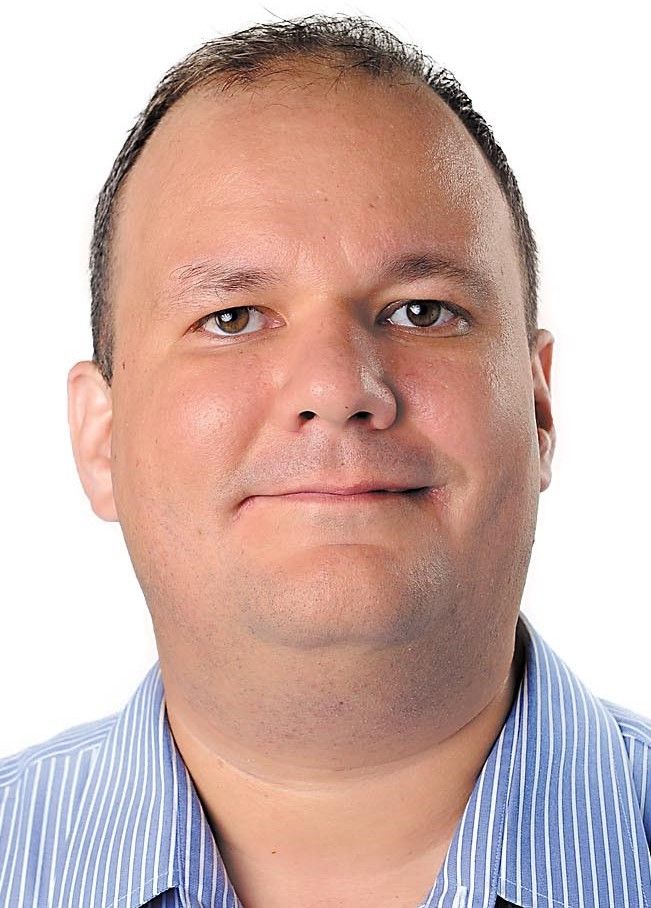Blog
Article
The Semi-Concierge Medicine model: Building a sustainable middle ground option in primary care
Key Takeaways
- SCM bridges the gap between fee-for-service and concierge care, offering personalized care with payer integration and moderate fees.
- Aligning with the Quadruple Aim, SCM enhances patient experience, improves population health, reduces costs, and supports provider well-being.
Explore the Semi-Concierge Medicine model, a balanced approach to primary care that enhances patient access and physician well-being while ensuring financial sustainability.
James Lawlor: ©The Ohio State University

It’s a scenario familiar to many in American health care: physicians under constant pressure, patients navigating rushed appointments, and a shared sense that the system isn’t working as well as it should. For decades, primary care has been caught between two extremes. On one end, high-volume, fee-for-service (FFS) practices operate on a backbone that mandates high visit volume. On the other end, concierge medicine promises longer appointments and better access, but only for those who can afford thousands in annual membership fees.
Recognizing the gap between fee-for-service and full concierge care, I developed Semi-Concierge Medicine (SCM). It blends the predictability and personalization of membership-based care with the accessibility and familiarity of traditional primary care—demonstrating that practices don't have to choose between physician sustainability and patient access, or between high costs and high volume. While other membership-based models like Direct Primary Care (DPC) have shown promise in independent settings, their exclusion of insurance billing makes them less compatible with large health systems. SCM was explicitly designed with those system constraints in mind—offering a model that retains payer integration while enabling more personalized, time-rich care.
The model arose from a dilemma within our practice. For nearly two decades, our Executive Health primary care office had delivered highly personalized care during preventive and acute visits. The practice was intentionally a high-attention, low-volume model with no added fees. Over time, it became a trusted access point for a diverse group of patients, including university leaders, local professionals, and key institutional stakeholders.
As patient needs surged in the years following the pandemic, it became clear that our intentionally low-volume model, without a long-term operational framework, was no longer sustainable. Meanwhile, burnout was increasing among providers and staff, a phenomenon hardly unique to our practice during this timeframe. We were at a crossroads and needed to reimagine our practice model.
Two considerations weighed heavily. First, our patients would likely struggle to accept the sudden introduction of high concierge fees. Second, as a public land-grant institution, we had to be especially sensitive to any kind of premium associated with care. A membership fee was necessary, but did it have to be $2,500 or more? We also recognized a unique opportunity to redefine the practice, not just in terms of financial structure, but in how we could serve both patients and the broader institution. With the fee, a portion of the profits could also be used to support underfunded programs, creating value beyond the walls of the practice.
Why couldn’t we create something in the middle—a model with panel sizes, membership fees, and service levels that all fell between the extremes of traditional FFS and full concierge care? With that in mind, we chose to take the “middle lane” and see what was possible.
Establishing model tenets
In traditional fee-for-service practices, physicians often manage panels of 1,500 or more patients. I’m continually impressed by those who maintain strong patient satisfaction under such demands. Yet even the most committed clinicians face challenges in providing deeply personalized care under those conditions. Appointments are necessarily brief, preventive care can be harder to prioritize, and maintaining long-term balance can be difficult.
Concierge practices address some of these problems by reducing panel sizes to as few as 300 patients, allowing direct access, and extending visit lengths. However, with annual fees between $2,500 and $25,000, they’re inaccessible to most Americans and create a two-tiered system in which access is restricted for different reasons in each model.
SCM is a conscious attempt to create a delivery model that remains accessible and attainable while allowing time-intensive, relationship-based care to flourish. With volume driven by patient needs rather than operational needs, physicians can focus on prevention, chronic disease management, and meaningful discussions about increasing patient longevity and healthspan. These conversations happen both in person and “between the visits” through secure messaging and calls that are part of the membership rather than separately billed.
Modest annual membership fees, in our case, about half of traditional midwestern concierge rates, help sustain revenue with predictable, recurring income. While services lean toward the concierge side of the spectrum, we deliberately chose NOT to include 24/7/365 singular physician access. Instead, we use a small team of SCM physicians who share after-hours coverage. This approach delivers responsiveness without requiring any one doctor to feel constantly “on,” preserving physician well-being and preventing burnout.
In our case, the absence of 24/7 direct access to a single physician is more than offset by the value of being embedded in a larger system, where members could access a full range of services, with our team guiding and facilitating that access.
Aligning with the Quadruple Aim
SCM was intentionally designed to align with the four goals of the Quadruple Aim—enhancing patient experience, improving population health, reducing costs, and supporting provider well-being.
Patient Experience: SCM allows for ample time on appointment days, appropriate staff-to-patient ratios for scheduling and navigation, responsive communication, and a strong patient-provider relationship. The focus is quality care first, with hospitality and service a close second.
Population Health: Smaller panels enable more proactive care. Preventive screenings, timely follow-up, and early intervention are embedded into the workflow.
Cost Reduction: Time-rich care models have been shown to reduce hospital utilization and overall healthcare spending.
Physician Well-being: SCM supports both recruitment and retention. Younger physicians have been shown to prefer models like ours, which emphasize purpose over volume, and seasoned clinicians may find SCM to be a more sustainable and satisfying way to practice medicine.
Shifting culture and metrics
When considering an SCM approach, it is essential to realize how significant the culture shift must be. It's easy to assume you can attach this model onto an existing practice, tweak a few workflows, and expect everything to run smoothly. SCM demands a fresh perspective on what success looks like and how care teams function.
For our practice, the most persistent outside input was the impulse to compare SCM performance to legacy metrics. For years, leaders and clinicians measured success by visit volume, schedule fill rates, and charge capture. It is easy to understand how those metrics made sense in an FFS world and have been the standard for years.
In SCM, relying on those same benchmarks quickly creates friction and is counterproductive. Visit counts may drop, not because the practice is failing, but because patients get what they need without needing to be seen in person every time or because multiple things were covered at one longer visit.
It takes deliberate education to help stakeholders see that volume is no longer the yardstick. A program leader adopting SCM can expect to provide ongoing re-orientation regarding these matters. Success must be measured by quality metrics such as growth rates, patient satisfaction, and retention.
Building revenue and scale
If the program is set up correctly, visit volume typically accounts for no more than one-fourth to one-third of total revenue. The remainder comes from membership fees, creating predictable income that supports operational stability and long-term planning.
In large systems, SCM can serve as a stabilizing force. When other service lines experience variability in performance, recurring membership revenue provides a consistent income stream that helps buffer financial swings and supports overall resilience. This model also integrates well alongside traditional fee-for-service, executive health options, or full concierge offerings, enabling organizations to significantly diversify their care portfolio without relying solely on high patient volume.
Scaling isn't about increasing panel size beyond capacity. Maintaining clear limits on physician panel size is essential to preserve time-rich, relationship-centered care. It's surprisingly easy to grow past what the team can realistically deliver if guardrails aren't in place.
Instead, successful scaling depends on designing the right staffing model for one panel and replicating it thoughtfully. Hiring ahead of demand, rather than reactively, is critical. Effective implementation often begins with a pilot team, giving leaders a chance to fine-tune workflows, build buy-in, and grow in a measured, sustainable way.
Managing perceptions
Clear communication is critical during the transition. As we formalized the structure, we made sure patients, staff, and specialists understood that the model was designed to diversify both care delivery and revenue methodology—not to create exclusivity. By offering a broader set of primary care options, we aimed to strengthen the overall system and make it more attractive to those who wish to receive their care differently.
Without precise framing, membership models can be misinterpreted as purely financial strategies. Presenting SCM as a sustainable, patient-centered evolution helped build trust and ensured alignment with broader institutional goals.
Conclusion
In the two and a half years since we launched the Semi-Concierge Medicine® model, its value has become clear. Patients report higher satisfaction, clinicians feel more engaged, and the model has established both financial sustainability and proof of concept.
As health care continues to evolve, the industry will need more “Quadruple Aim” innovations: delivery models that consider physician well-being, patient experience, population health, and the system’s bottom line, all at once.
SCM may not be right for every practice, but for many, it offers an innovative and scalable alternative for those seeking a more balanced approach to care delivery. Its structure is especially well-suited for system-based environments, where it can expand patient choice and create more stable, diversified revenue streams.
Read the full white paper Preprint version here.
James Lawlor, DO,MBA, FACOI is a practicing internist, healthcare innovator, and the creator of the Semi-Concierge Medicine® model. He serves as Medical Director of Executive Health at The Ohio State University Wexner Medical Center. Reach him at [email protected]
*Acknowledgement: While the Semi-Concierge Medicine® trademark is registered to the Ohio State Innovation Foundation, the underlying intellectual framework presented here reflects the author's independent work. No proprietary data, institutional trade secrets, or confidential materials were used in its development.
Newsletter
Stay informed and empowered with Medical Economics enewsletter, delivering expert insights, financial strategies, practice management tips and technology trends — tailored for today’s physicians.





